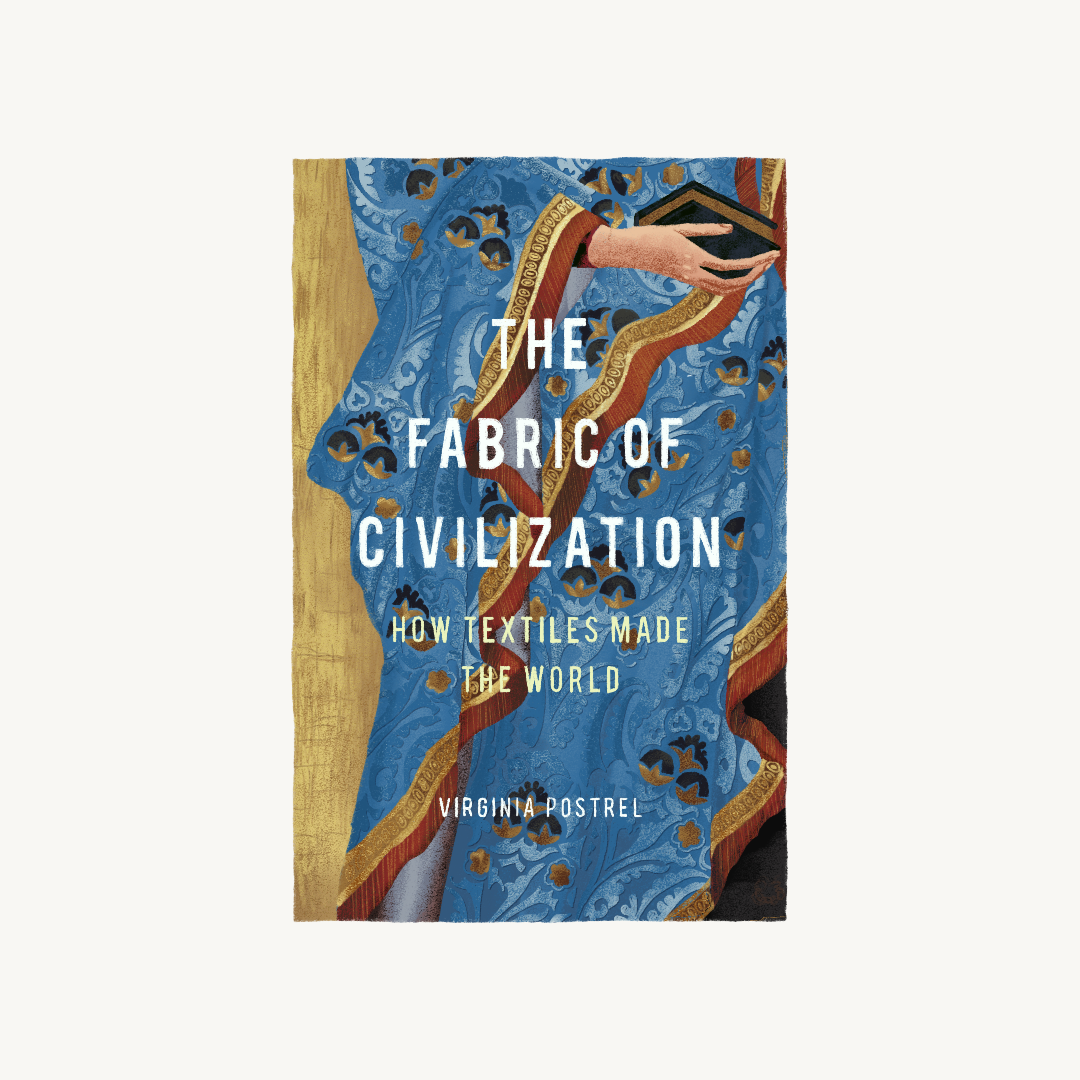⚡️ I was provided an audio-ARC by the publisher via NetGalley in exchange for an honest review (Out now in print and on audiobook on 8/17!)
This post contains affiliate links to purchase this book
I LOVED this book. As someone who grew up with textile crafts, my mind was blown by the myriad of connections that the author makes and repeatedly put it down just to consider how cool it is. I could rave about this book for days, but I will stop writing this preamble so that you can read my actual review and see how wonderful it actually is.
The Fabric of Civilization: How Textiles Made the World
by Virginia Postrel
🌟: 5 / 5
📚: A global history of the textiles we’ve made and how they’ve made us.
💭: Postrel’s history brings a fresh perspective to textiles of the past by going beyond the expected descriptions of materials and instead delves deep into large and small scale implications of the development of this product over time.
Not only is this a history of textiles, it’s an overview into the history of agriculture, our understanding of chemistry, the shaping of language, the rise of industrialization, and the influence of skilled workers on economics and gender roles through the present day. By using every tool at textile historians’ disposal— from DNA sequencing to determine when humans began domesticating cotton, sheep for wool, and other natural fibers; to studying economic records of the past; to working alongside materials scientists to work on textiles of the future. Postrel paints a fuller picture of the impact of fabric on everyday life (besides the fact that we touch and use it every day) and ties together the seemingly distant threads of what arose in the process.
Although it’s by no means an exhaustive guide to every culture’s use of fabric throughout history, The Fabric of Civilization brings together far-reaching case studies in a way that isn’t completely overwhelming to readers. Descriptions of processes, revolutionary technologies, and people who had a hand in making them are rarely, if ever, hard to wrap your brain around— even if you have little knowledge of the textile manufacturing process. Postrel goes in depth on her subject, but without feeling boring or too in the weeds (as many micro-histories tend to fall prey to).
And although this book does touch on craft, it’s not a book about craft. It is in equal parts history, science, math, and art coming together in one object that really engages your whole brain. More of a theoretical math person than an arts and crafts person, or vice versa? This book very expertly weaves very left and right-brained subject elements together to make learning about textiles as cross-disciplinary as the industry was (and still is).
My main and only issue with it is that it attributes quotes or theses to “a scientist” or “a historian.” It feels both incomplete and negates someone’s whole research by not properly attributing it to them? I assume that this could have a footnote or a citation at the end of the book, but as this is an audiobook, there’s no proper attribution at all? Which feels like a massive negative as the rest of the book is very clearly extremely well-researched and as a result, makes me somewhat question the validity of the other facts in this book that aren’t properly attributed.
Despite issues I had with some attribution and references, I still found this book truly fascinating. I was constantly in awe by the connections that this book allowed me to start to see. Postrel weaves a truly brilliant tapestry of the invisible threads that tie cultures, people, industries, technologies, and— most importantly— fabric together.
